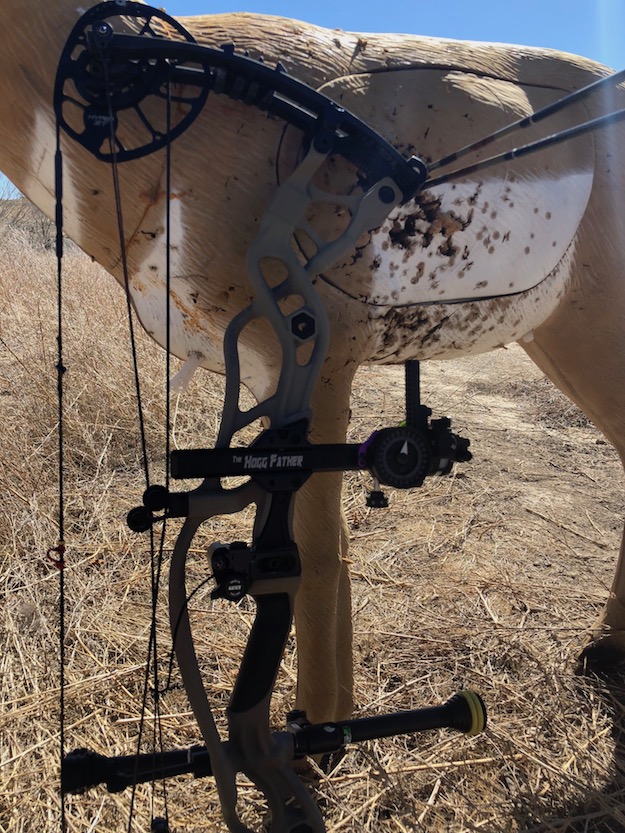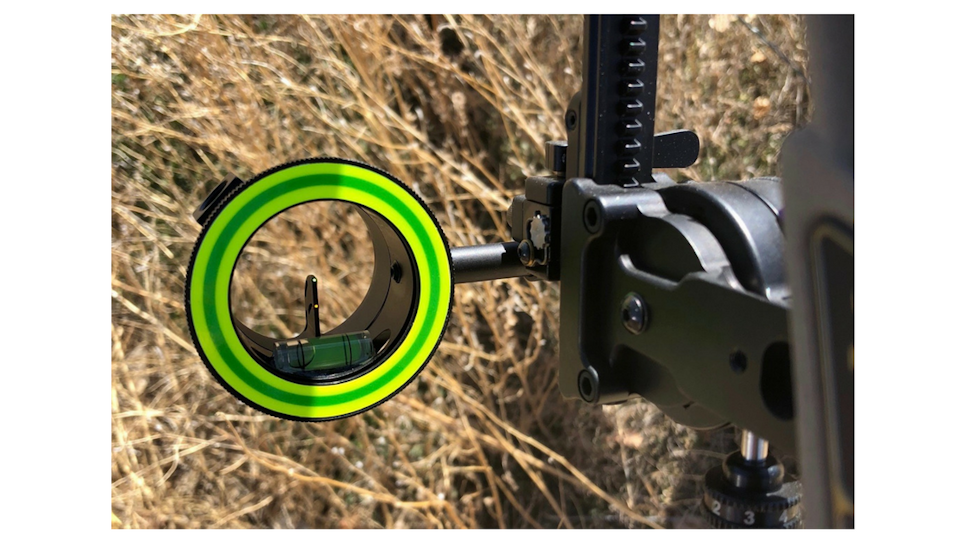I’ve tested piles of bow sights, from standard five-pin fixed models to moveable single-pin rigs to three- and five-pin fixed/moveable hybrids. Here’s what I’ve discovered: if you center any sight’s housing in your peep, settle the selected pin and pull through your release, you’re going to be happy with your shot placement.
With that noted, some sights are simply better than others. Some are more durable, some are brighter, some feature dovetail adjustment, some boast second- and third-axis adjustment. The list goes on. And though I’ve had the chance to test some pretty amazing sights over the years, I’ve yet to find one that I felt was simply made for me. A sight that blends purposeful technology with rugged durability and accuracy-boosting features. I just hadn’t found exactly what I was looking for.
Until, that is, I spent a week testing Spot-Hogg’s Hogg Father with MRT Pin Guard and Double Pin Pointer. (Try saying that three times fast.) It’s the sight I’ve been waiting for.
Getting started
Due to its many parts and markings, the Hogg Father with MRT Pin Guard and Double Pin Pointer will likely cause some set-up anxiety. I’m not going to spend a lot of time here on set-up, but I will say you don’t need NASA experience to get this beauty figured out. Spot-Hogg provides a detailed, step-by-step sight-assembly sheet with the product, and you can also access video instructions on Spot-Hogg’s website.
What I Love
First and foremost, I love the single-pin design. I personally struggle with any sight that features multiple horizontal pins coming in from the side of the housing. The look prevents a full, clear sight picture and, for me, creates an element of anxiety. It may be different for you — when it comes to single-pin vs. multi-pin, each archer must decide which route is best for him or her. 
Adding to my love of this sight is the fact that the single vertical post centered perfectly in the bottom of the sight’s housing boasts a second aiming point. That’s right, the Spot-Hogg Hogg Father single pin is actually a double pin. This design should satisfy many of the single-pin critics who worry about having to make a quick yardage adjustment. More on this later.
I also applaud the MRT (Multi-Ring Technology) pin guard. I must admit that when I first threaded it onto the face of my housing, I didn’t love the look, and I didn’t really believe it would help with accuracy. Well, the look actually grew on me quite quickly, and I soon learned that the MRT was anything but snake oil. Simply put, the MRT increases proper peep-to-sight alignment. I found I could acquire and get on target faster, which gave me more time to settle in and begin pulling through my shot.
Where the MRT really shines is in low-light situations. The multi-rings gave me a bright, visible center green ring to align my peep to. The double-pin Hogg Father MRT is available in single-ring and triple-ring options. My personal favorite is the triple-ring. Other notable features of the MRT include the larger, more visible bubble level and better protected fiber optics.
The Double Pointer
New for 2018 is the Double Pointer, and this fancy little purple device gets five stars from me. After sighting-in the Hogg Father’s top single pin at 20 yards, I attached the included calibration scale sight tape. Take your time and make sure your 20-yard mark is dead on. I shot at 20 yards for three days before making my mark. After attaching my calibration scale and matching my 20-yard mark up with the tape’s 20-yard mark, I then sighted-in at 60 yards. Again, take your time when doing this. Once you attach your main sight tape you want it to be just right. This can only be achieved by having the top pin dialed in perfectly at the aforementioned distances. Once I was dead on at 60 yards, I took the number (1-40) on my calibration scale and matched it to the included permanent tape.
After attaching the permanent tape, I shot the sight at 25, 30, 35, 40, 45, 50, 55, 60, 65, 70, 75 and 80 yards just using the top pin. Guess what? Each distance was perfect. Enter the Double Pointer. When the top purple pointer is set at 20 yards, the bottom second pointer indicates a second yardage range. To shoot dead on at the bottom pointer range, all I had to do was use my second pin. Easy. With this one sight, you can be dialed in perfectly at two yardage ranges, and it allows you to pin gap as well. I love it.
Of course, when it comes to built-like-a-tank durability, few do it better than Spot-Hogg. This sight is ready for any bowhunting environment and any weather condition. Vertical and horizontal adjustments are super simple, and the adjustable dovetail with Hogg-It Knob makes it easy to customize the distance the sight sets out and in front of your riser.
If you’re in the market for a new bowhunting sight — one that could very well be the last sight you’ll ever own — give this rig a go. I don’t think you’ll be disappointed.






